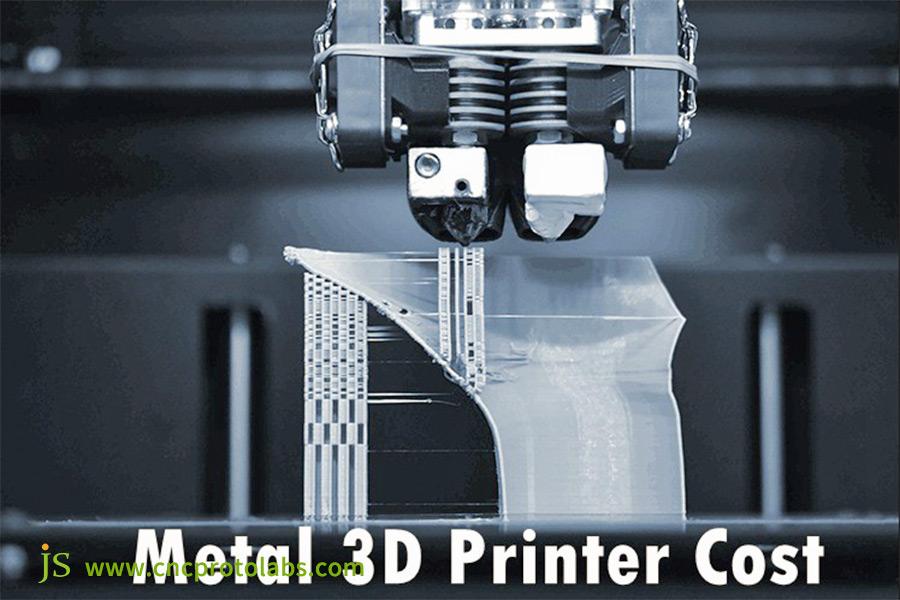A single machine can take complex digital designs and turn them into extremely dense, solid metal parts in a few days, without molds, with virtually unlimited freedom. This sounds like the ultimate dream of the manufacturing industry.
But when you open up a supplier's bid and see prices for metal 3D printers between $500,000 and several million, you are instantly perplexed.Why should a printer that seemingly "prints" metal be so expensive? What are the concealed costs behind the tag?
Do not worry! This tutorial will break down the reasons from different perspectives, from equipment selection to pricing model and concealed costs. It will also teach you how to save money, giving you a clear view of the cost paradigm of 3D printing and keeping you from making the wrong moves in your metal 3D printing investment.
Summary Of Core Answers
| Cost Dimensions | Metal 3D Printers (e.g., SLM) | Metal 3D Printers (e.g., SLM) | Key Differences |
| Upfront Purchase Cost | $500,000-$2,000,000 + | $50,000-$500,000 | Core optical and precision systems such as lasers, scanning mirrors, and vacuum chambers drive up the base price. |
| Equipment Installation and Debugging | Professional site, inert gas pipeline, and circuit renovation are required. | Relatively simple, standard industrial electricity. | The admission ticket is expensive and involves facility renovation. |
| Unit Material Cost | Extremely High (specialized metal powders, $50-$200/kg). | Lower (standard extrusions and billets). | Material form (powder vs. bulk) and patent protection contribute to significant price differences. |
| Ongoing Maintenance Costs | High (laser, optical lens replacement, specialized engineers). | Medium (tools, lead screws, guide rails). | Core components have a limited lifespan, and maintenance requires original manufacturer expertise, resulting in high technical barriers. |
| Operation and Post-processing | Full time engineers and specialized post-processing equipment (sandblasting machine, etc.) are required. | Skilled technicians are required. | The hidden chain from 'print completed' to 'parts available' is long and expensive. |
| Design/software Costs | Dedicated slicing/process control software supports design expertise. | General-purpose CAD/CAM software. | The software ecosystem is closed and requires unique skills from operators. |
Why Are Metal 3D Printers So Expensive?JS Precision's Equipment Selection Experience
Most new customers to metal 3D printing are confronted with the following dilemma: in front of a multitude of technological options, including SLM and DED, they have no idea which one is best suited for their part requirements. They fear making the wrong machine choice and subsequently causing cost overruns, but no reliable references are available to them.
JS Precision, with 12 years of real-world experience in this area, can advise clients against these pitfalls.We have completed over 1,500 metal 3D printer choice projects during the past 12 years for over 400 manufacturing companies operating within the aerospace, medical, automotive, and energy sectors.
For example, a healthcare client had to purchase a binder jetting machine in order to produce orthopedic implants. We recommended them first that the subsequent sintering process would need a distinct furnace (at a price of approximately $80,000 USD) and proposed an SLM machine more suited to the precision of medical parts, saving the client six months of time.
Through 2024, our selection process enjoyed a 98% customer satisfaction rate, and 80% of our customers would recommend our services to their peers. This guide is based on these real projects, technical data, and customer feedback. All cost analyses and selection recommendations have been tried in the field, so you can use it with confidence.
If you are unable to decide between a metal 3D printer, JS Precision's custom 3d printing manufacturing service provides personalized consultation, providing you with complete support from needs analysis to implementation of solutions. A personalized report of your choice will be completed in 48 hours after receiving your inquiry.
Price Confusion: How Much Does A Metal 3D Printer Cost?
After the overview of JS Precision's choice experience, you might wonder, how expensive is a metal 3D printer actually? There is no absolute reply to this question because cost is determined by a number of factors varying from printing type, brand, and setup.
First of all, there are differences in printing type.Equipment prices for different lines of technology vary significantly, as can be shown by the following table:
| Print Type | Price Range (USD) | Core Features | Applications |
| Selective Laser Melting (SLM/DMLS) | ¥500,000 - ¥2,000,000+ | Highest precision and performance. | Highest precision industrial components, like medical implants and precision aviation components. |
| Binder Jetting | ¥300,000 - ¥1,000,000 | Fast, but post-sintering is required for parts. | Mass production of uncomplicated structural components, like automotive gizmos. |
| Directed Energy Deposition (DED) | ¥100 million | Used for repair and large-scale production of parts. | Large mechanical part repair, heavy machinery manufacturing. |
Secondly, there are technology barriers and brand premiums. Tier-one brands such as EOS, SLM Solutions, and Velo3D have a pricing premium of 20%-30% over other brands based on the high equipment reliability and extensive process libraries.
Lastly, there is the trap of "optional" configurations. A two-laser machine will cost around $300,000 more than a single laser, and a size increase of every 100mm in build cylinder can raise the price 15%-20%. These configurations can contribute substantially to the final transaction price.
Surprising "Hidden Costs" Once The Machine Is Purchased
Buying a metal 3D printer is not the end, but just the start, because there are numerous unforeseen "hidden costs" that businesses tend to ignore, leading to cost overruns in the end.
1.Cost of "Atmosphere": Metal 3D printing demands an inert gas environment, which means having a steady supply of high-purity argon or nitrogen at all times. This, along with the gas purification system, can range between $50,000 and $100,000 annually.
2.Facility Modification Costs: This equipment is very particular about its environmental requirements, such as a stable industrial power grid, dedicated water chillers, vibration-stable floor, and even load-bearing capacity and space adjustments to the plant. They can go as low as $30,000 and as high as $150,000.
3.Safety and Compliance Expenses: Metal powders are combustible and explosive, and they require explosion-proof and fire-proof handling equipment. The employees will also require special labor protective equipment and regular health check-ups, which will cost $20,000 to $50,000 annually.
4.Post-Processing Costs: After being printed, parts require wire-cutting machines to sever them from the substrate, sandblasting to prepare the surface, heat treatment furnaces to eliminate internal stresses, and even hot isostatic pressing (HIP) furnaces to eliminate internal flaws. All of this equipment to buy and maintain is expensive.
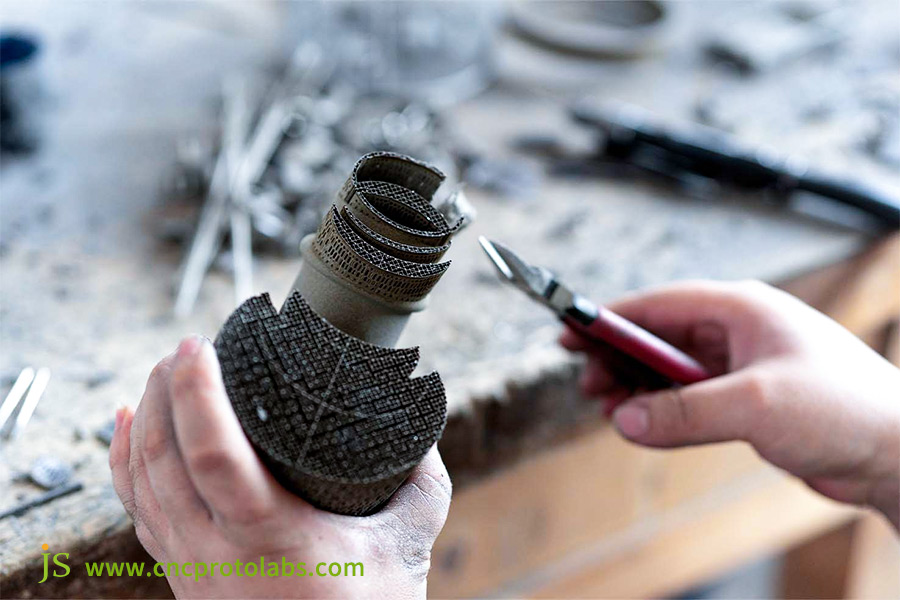
"Affordable Equipment, Unaffordable Materials"—The Harsh Reality Of The Business
This is the bitter truth of the world of metal 3D printing, and there are four key reasons why it is so.
1. Patent monopoly
Most equipment manufacturers adopt a "closed powder loop" strategy, implying or mandating use of their certified proprietary powders. This creates a de facto monopoly for companies with limited options.
2. Extremely high barrier to entry in powder preparation
Metal powders possess extremely stringent requirements of sphericity, particle size distribution, low oxygen content, and good flowability. Such features can be achieved only from advanced atomization processes, which adds powder cost, typically between $500 and $2,000 per kg.
3. Shifting costs for material R&D and certification
Each lot of aerospace/medical-grade material is expensive to test and certify, such as mechanical properties testing and composition. These are ultimately transferred in the selling price of the powder.
4. Powder life and recycling
Used powder must be sieved and replenished before reuse can occur. The recycling cycle is finite, typically only 3-5 times, after which the performance reduces and it cannot be used anymore.
For material selection for 3D printing parts, JS Precision offers certified powders in various quantities to guarantee print quality and optimized powder utilization through a professional recycling process, helping you reduce material costs and avoid the dilemma of "can't afford materials."
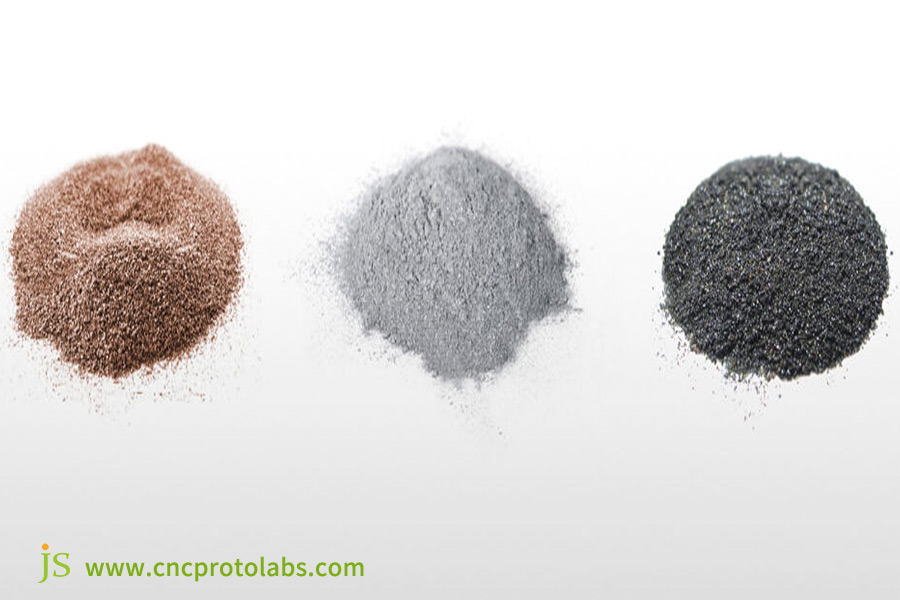
From Drawing To Finished Product: In-Depth Cost Factors Before 3D Printing Metal
From concept to printed part, the total expense of metal 3D printing goes far beyond machinery and material. Four simple steps that are easy to overlook contribute to overall expenses.
1.Costs of design phase: Topology optimization and lightweight design require devoted engineering time, 1-2 weeks per component. Moreover, experience in support structure generation and support structure design directly affects material utilization and post-processing complexity. 10%-20% material wastage can result from improper design.
2.Print preparation cost: Nesting software licensing is $5,000-10,000 a year, and optimizing the use of build volume is a necessity. Underutilization wastes significant machine space and time.
3.Time expenses: A build cycle may last dozens of hours. For instance, it can take 40-60 hours to print a intricate titanium alloy piece. Constant monitoring is also necessary, adding labor expenses.
4.Learning curve and failure cost: An unsuccessful print is a complete loss of one entire cylinder of material, gas, and time. It can be as much as 20%-30% for new companies to have an unsuccessful print, and getting mature process parameters requires lots of trial and error, costing typically tens of thousands of dollars.
JS Precision's online 3D printing services can enable you to save overall expenses. A dedicated team of professionals takes care of everything from print checking to design optimization, reducing failure rates and enabling you to obtain qualified parts at a lesser expenditure without the cost of trial and error.
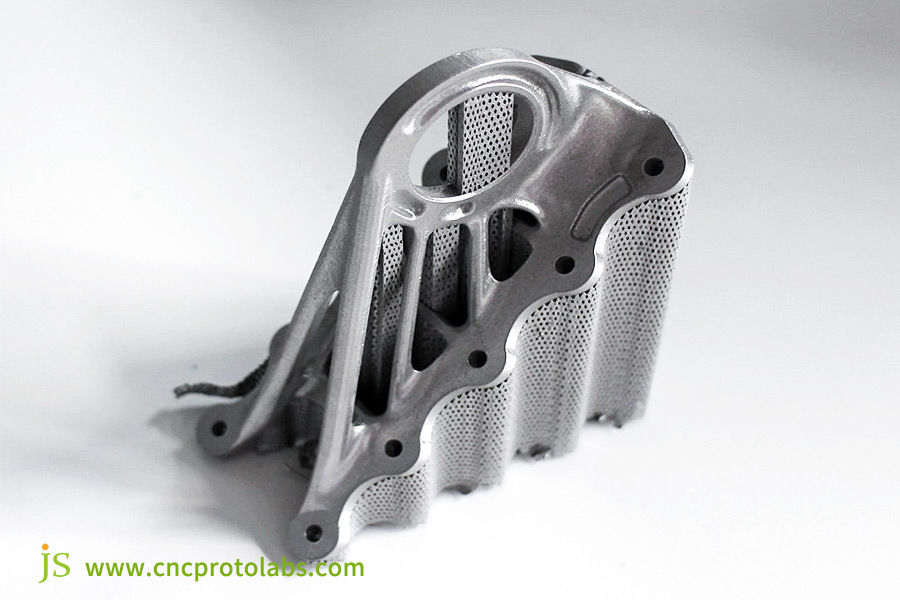
Smart Manufacturing Guide: Five Tips To Dramatically Reduce Metal 3D Printing Costs
Although metal 3D printing is expensive, five smart tips will reduce the costs by a great extent, making metal 3D printing an affordable option.
1. Design Optimization: It is the Key to Cost Management.Topology optimization has the ability to reduce material use while maintaining part performance, typically reducing material costs by 15%-25%.
2. Unique Advantages("Conformal Cooling Channels"): Leveraging technical advantage of metal 3D printing to design conformational cooling channels improves part processing efficiency and, in turn, reduces costs.
3. Batch Production and Smart Nesting: Print multiple parts at once using the build volume, spreading machine time and fixed cost. For example, instead of printing part by part, printing five at once can reduce unit time costs by 80%.
4. Powder Management Strategy: Have a rigorous powder recovery, testing, and reuse process to maximise material utilisation, doubling powder cycles from three to five, and material cost savings.
5. Professional Service Provider: For most companies, outsourcing to a professional 3D printing service provider like JS Precision instead of purchasing equipment is the most economical and responsive way to save on all upfront investments, hidden costs, and technical risks.
JS Precision can help you optimize the 3D printing price. With proven steps for everything from smart nesting to powder recycling, you can reduce the overall cost of metal 3D printing without sacrificing quality, enabling smart manufacturing.
Technology Competition: A Cost Comparison Of Alternative Metal 3D Printing Routes
Different metal 3D printing technologies and metal 3D printing compared to traditional manufacturing techniques, both of them have some strengths and weaknesses regarding costs. The best technology route can help you achieve excellent cost savings. The exact comparison is shown in the table below:
| Comparison Dimensions | Technology A | Technology B | Cost Advantage |
| SLM vs. Binder Jetting | High precision, cost $500,000-$2 million+, no post-sintering required. | Quick speed, cost $300,000-$1 million, post-sintering required (cost $20,000-$50,000/year). | Apply Binder Jetting to simple parts, SLM to high-precision complex parts. |
| Metal 3D Printing vs. Metal Injection Molding (MIM) | No mold required (saves $50,000-$100,000 mold cost), suitable for small runs (less than 100 units) of complex parts, high unit price. | Requires mold making, suitable for large runs (over 1,000 units) of simple parts, low unit price (only 1/3 of metal 3D printing). | Employ metal 3D printing for small runs of complex parts, MIM for large runs of simple parts. |
| Metal 3D Printing vs. Investment Casting | Higher resolution (up to 0.1mm detail), suitable for internal cavities of complexity, but high cost per piece (more 50%-100% than that of casting) . | Suitable for parts of medium complexity at low cost), but it cannot make complex internal cavities. | For complex internal cavities in a part, choose metal 3D printing, and for parts of medium complexity, choose precision casting. |
JS Precision Custom Metal 3D Printing Service: Your Cloud-Based Smart Manufacturing Factory
If purchasing a metal 3D printer is beyond budget or too risky, your best choice is our custom metal 3D printing service. We're your cloud-based smart factory of manufacturing, and we will resolve all of your problems.
1. Zero fixed asset investment: You don't have to shell out millions of dollars on equipment buying costs. Simply pay as you go and order as you need a part.
2. Best equipment and materials in the industry: We offer a full range of materials, from stainless steel, titanium alloy (Ti6Al4V), aluminum alloy (AlSi10Mg), to high-temperature nickel-based alloys (Inconel 718). We also utilize multi-laser SLM machinery to offer efficiency and quality.
3. Backed by a professional team: Our application engineers will provide you with Design for Manufacturability (DFAM) analysis to help you design parts for optimization, material saving, and reduced print failure.
4. One-stop post-processing: We provide end-to-end service from printing, wire cutting, heat treatment, to surface treatment (sandblasting, polishing). You receive ready-to-use finished parts, without undertaking subsequent operations yourself.
Case Study: SLM Technology Solves The Manufacturing Difficulties Of High-Modulus Aluminum Alloys
Project Background
An industrial robot manufacturer, which required extreme dynamic performance, was forced to use a high-strength, high-modulus aluminum alloy (AlMgSc series) of unique characteristics to make lightweight structures for the distal forearm joint of a robot.
Material, termed as "King of Cracking" in traditional casting and machining, exhibits a high tendency toward hot cracking and severe work hardening, which results in very poor yields and renders it nearly impossible to utilize in complex structures.
Technical Challenges and the Stalemate of Traditional Manufacturing
The three major technical challenges facing the project hindered traditional manufacturing.
1.The vulnerability of the material to bad formability. AlMgSc alloys in the traditional melting and casting go through a wide solidification range, making hot cracking nearly inevitable and closing the door to fabricating structurally sound parts.
2.Processing costs are astronomical. Using the subtractive "forging + five-axis machining" method, over 90% of the material is removed from the solid blank, with resulting high tool wear, labor in days, and less than 10% material utilization rate, with cost per part over $20,000.
3.It is difficult to match performance and lightness. Producing individual components and then combining them to prevent processing defects increases weight and assembly errors that impact the robot's motion speed and accuracy.
JS Precision Solution
JS Precision uses SLM technology to allow customers to benefit from a revolutionary solution.
1. Integrated Design and Topology Optimization: We topologically optimize based on the robot's working environment to develop a ribbed plate bionic structure. Through use of SLM technology, we manufacture the entire complex internal flow passage, lightening mesh, and all interfaces for mounting in one step, integrating what was once 10 parts into a single integral component.
2. Precise Process Control: We have adopted a dedicated SLM process parameter package for AlMgSc material, e.g., laser power, scanning speed, and powder coating thickness, to ensure a stable printing process.
3. Rigorous Post-processing Process: After printing, the part is removed from the substrate through wire EDM, and then sandblasted to descale remaining surface powder. The part is then placed in a heat treatment furnace to eliminate internal stresses. Finally, a hot isostatic pressing (HIP) furnace is utilized to eliminate small internal defects, if any.
Project Outcomes and Cost-Benefit Analysis
- Performance: The final part was 35% lighter than the original forged solution, the end-of-line speed was increased by 15%, and the tensile strength was increased by 20%.
- Cost: SLM solution reduced the cost per part to approximately $8,000, over 60% lower than traditional machining. The cost savings result primarily from increasing material utilization from 10% to 95%, eliminating hundreds of hours of five-axis machining time and tool wear-out, and eliminating mold creation or forging cost.
- Time: From design freeze to first qualified prototypes, it took one week, compared with 8-10 weeks in traditional approaches.
- Quality: Initial print quality was greater than 98%, and internal quality was CT scan-defect free with performance entirely meeting design requirements.
Case Study: The case demonstrates that for certain "tough materials" with specific properties with troublesome handling by traditional methods, SLM technology is not an expensive option but the only economic and viable solution.
If you need 3D printing parts manufactured from equally challenging materials, JS Precision can help you achieve performance and cost breakthroughs, as it helped AlMgSc alloy. Using dedicated SLM technology combined with sophisticated post-processing, you can streamline complex part production.
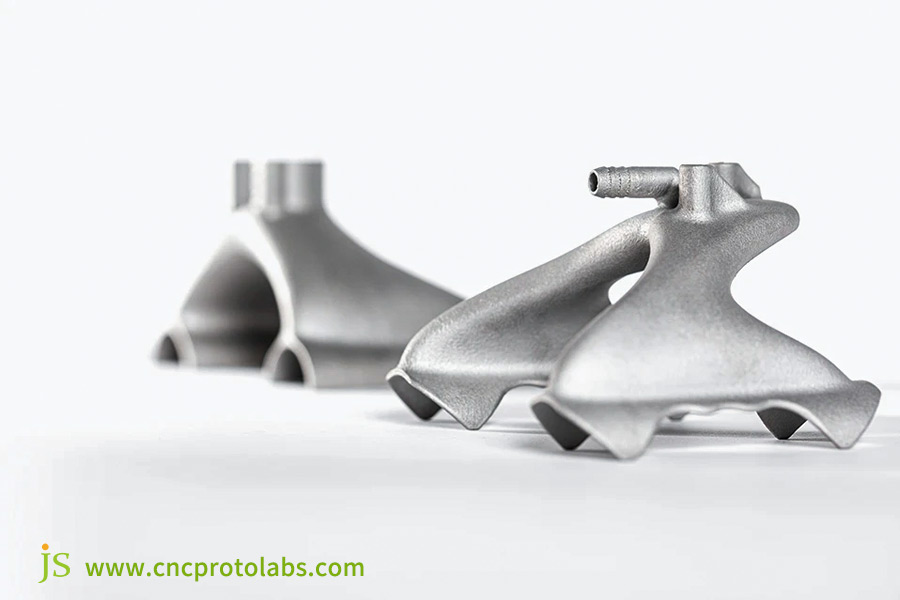
FAQs
Q1: Is the used metal 3D printer market an opportunity or a trap?
Second-hand market offers opportunities at discounted rates, with some equipment as low as 50%-70% of the new ones, within the reach of budget-limited companies. There are downsides though. For example, it may not have an official warranty, its core components may be of old age, and its technical specifications may be of old age and may not be compatible with new powders.
Q2: How is the cost of 3D printed metal parts estimated?
It is usually estimated on the basis of "material volume cost + machine time cost + post-processing charges." Material volume cost is estimated on the basis of part volume and unit price of the powder, machine time cost on print time and equipment costs, and post-processing per process. You can upload a 3D model on JS Precision online quotation platform, and the system will estimate it in real time.
Q3: Are there likely to be massive discounts on metal 3D printers in the future?
Certain flexibility in price reductions. With mature technology and expanding market scale, the price of mid- and low-end machines can fall by 10%-20%. However, core components such as high-power lasers and precision powder coating machines still have few suppliers with high technical barriers to entry. Heavy price reductions will not occur in the foreseeable future, while the price of high-end machines will remain firm.
Q4: Why is it then so much cheaper to buy powder yourself?
Of course, generic powders are 20%-30% cheaper than manufacturer-certified powders, but at a price. Non-certified powders can void your warranty on your equipment, drive print failure rates through the roof to well over 30%, or even kill expensive laser heads. These costs far outweigh any material cost savings, and JS Precision highly recommends against their use.
Summary
The cost of metal 3D printers reflects the value of the cutting-edge optical technology, material science, and precision engineering that goes into making them. It is short-sighted for most companies to spend heavily on capital blindly.The smarter move is to hire professionals to do professional things, make fixed costs into variable costs. You get to enjoy the benefits of technology with financial flexibility and stability preserved.
As a specialized 3D printing service provider, JS Precision offers one-stop custom 3D printing manufacturing services to help you solve the issue of obtaining metal 3D printers, reduce the 3D printing price, and guarantee the quality of 3D printing parts to offer you a trouble-free process from design to final product.
If you are in need of small-batch sampling or mass production, we can meet your requirements. Welcome to choose us to start your high-efficiency intelligent manufacturing process.
Disclaimer
The contents of this page are for informational purposes only.JS Precision Services,there are no representations or warranties, express or implied, as to the accuracy, completeness or validity of the information. It should not be inferred that a third-party supplier or manufacturer will provide performance parameters, geometric tolerances, specific design characteristics, material quality and type or workmanship through the JS Precision Network. It's the buyer's responsibility Require parts quotation Identify specific requirements for these sections.Please contact us for more information.
JS Precision Team
JS Precision is an industry-leading company, focus on custom manufacturing solutions. We have over 20 years of experience with over 5,000 customers, and we focus on high precisionCNC machining,Sheet metal manufacturing,3D printing,Injection molding,Metal stamping,and other one-stop manufacturing services.
Our factory is equipped with over 100 state-of-the-art 5-axis machining centers, ISO 9001:2015 certified. We provide fast, efficient and high-quality manufacturing solutions to customers in more than 150 countries around the world. Whether it is small volume production or large-scale customization, we can meet your needs with the fastest delivery within 24 hours. Choose JS Precision this means selection efficiency, quality and professionalism.
To learn more, visit our website:www.cncprotolabs.com



